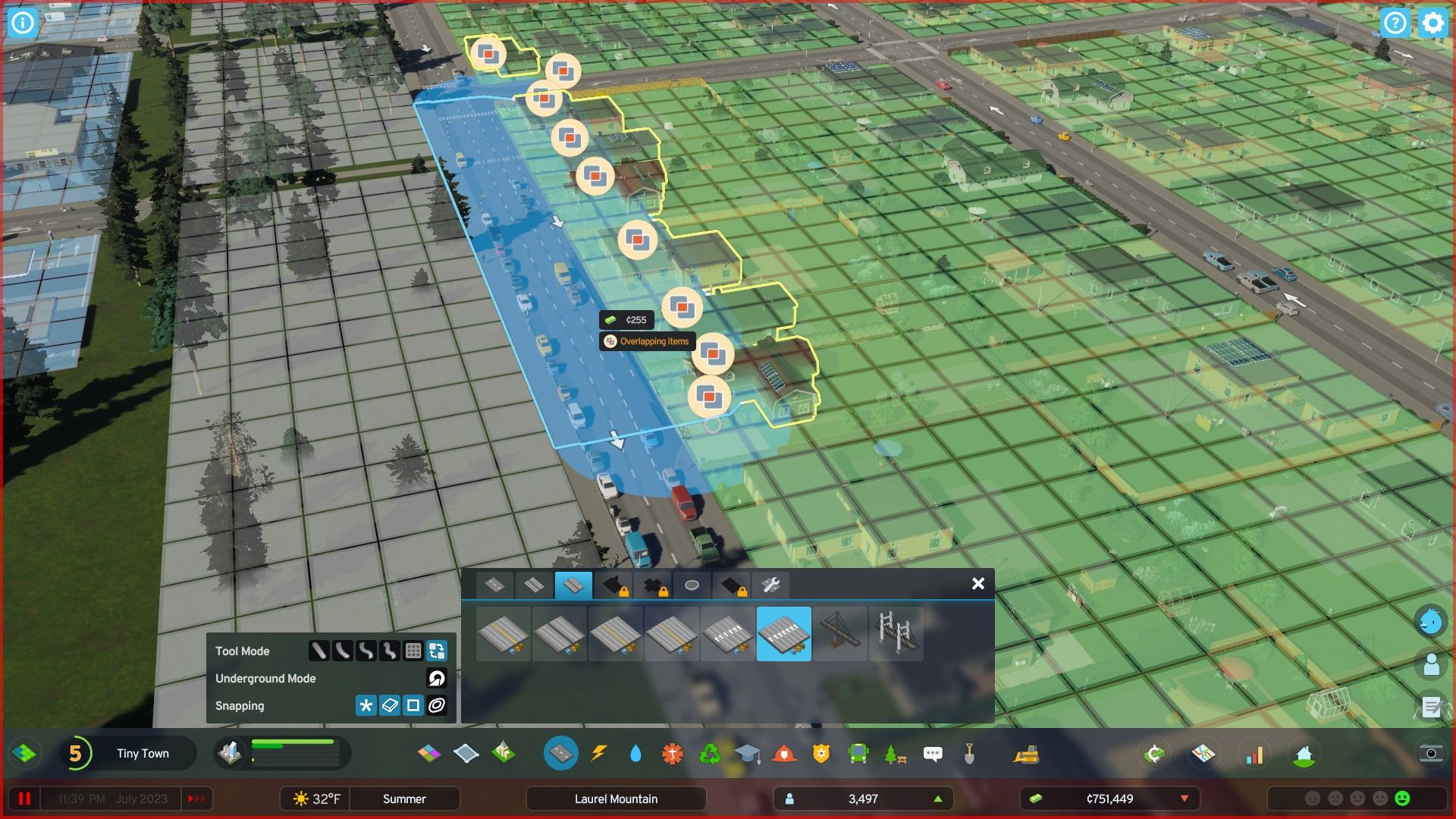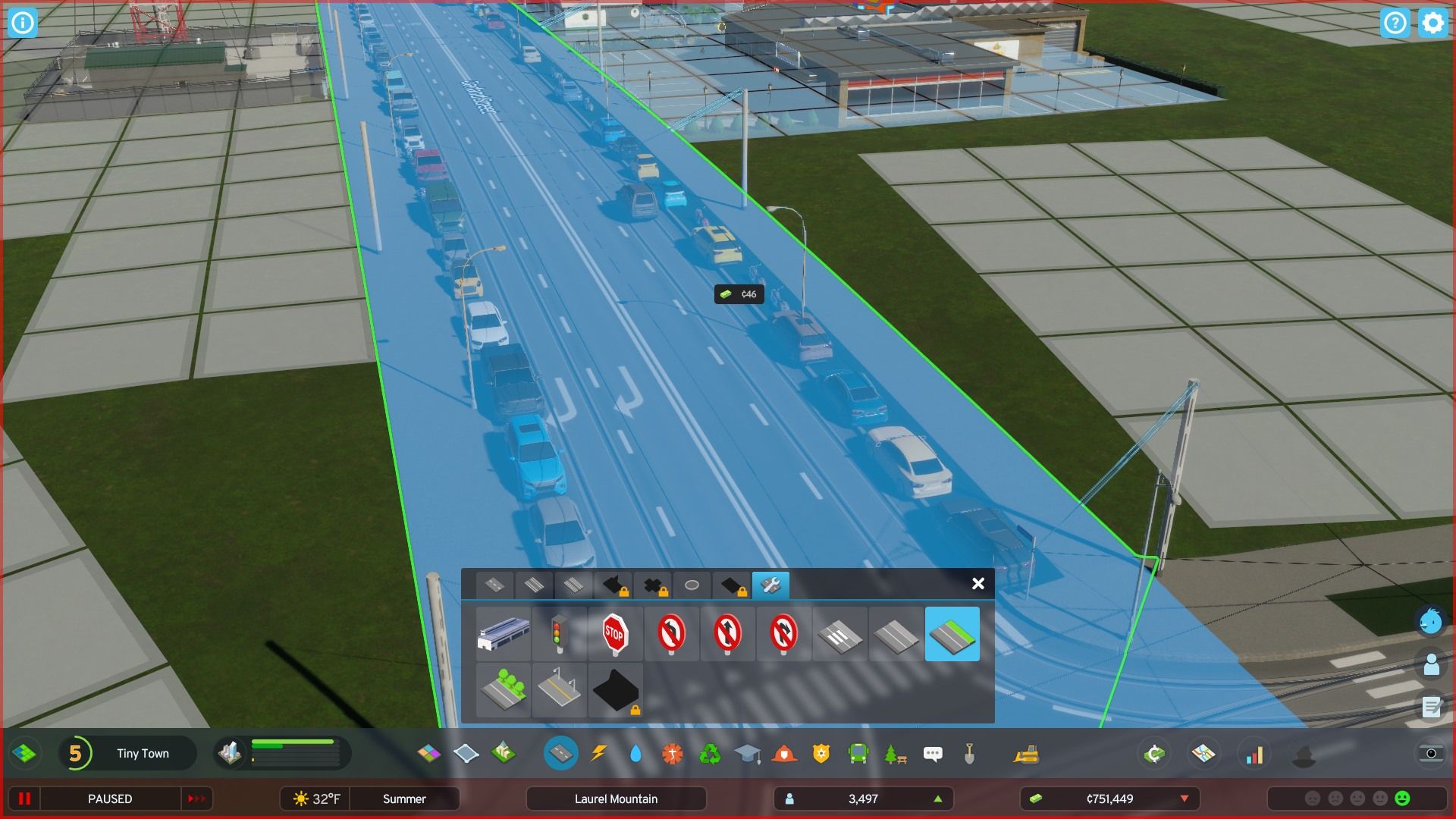
Mastering Road Upgrades in Cities: Skylines 2

Learn the art of efficient traffic management in Cities: Skylines 2 with our guide to upgrading roads Discover how to easily replace roads, enhance intersections, and optimize parking spaces for a seamless urban experience Master the road network for a thriving city!
Similar to other city-building games like SimCity, Cities: Skylines 2 focuses mainly on simulating traffic. Players have the task of ensuring that the city residents can easily travel to work and local shops without causing traffic congestion. At the same time, they must avoid excessive noise and air pollution.
A key tool at the player's disposal is the ability to replace and upgrade existing roads. This eliminates the need to demolish old roads and redraw them from scratch. While this feature was present in the original game, upgrading roads in Cities: Skylines 2 has been made even simpler.
How to Replace a Road
Roads are available in three different sizes: small, medium, and large. In addition, players have the option to access highways, which are special road types available in all sizes.
To convert a road to a different type of the same size, follow these simple steps: Go to the road construction menu and select the desired road type. Then, switch to the "Replace" tool mode. With the cursor, target the specific road segment you want to change and click on it to transform it into the new road type. If you're placing a one-way road, click and hold the cursor while moving it in the desired direction.
The task of upgrading a narrow road to a wider one is more challenging. The new road will intersect with nearby buildings and structures, requiring players to potentially relocate, demolish, or reorganize the surrounding area for the road to fit. Zone buildings that obstruct the path are automatically demolished by the game without any cost to the player. However, other structures need to be manually addressed.
In the provided image, the game does not allow the replacement of a two-lane road with a six-lane road due to its overlap with a pedestrian path. Since pedestrian paths are not considered as roads, players must remove the path and later replace it if they wish to proceed with this upgrade. The game notifies players of this issue through red-lettered warnings indicating "Invalid Shape" and "Overlapping Items."
Fortunately, there is a solution to this problem. With the help of a new feature, players now have the option to move the cursor along the selected road in order to expand the upgrade on either the left side, the right side, or even both sides (especially when upgrading from small to large). For example, in the image above, the upgrade only expands on the right side of the road. This issue only affects zoned buildings, resulting in an orange "Overlapping Items" warning instead of a red one, allowing the upgrade to proceed. In light of this, it is advisable for players to position all their civic buildings on a single side of the road if they have plans to expand it in the future.
Any road upgrades obtained from external sources will remain on the new road as long as the new road type is compatible with the upgrades. For example, if players choose to replace a two-lane road with trees and a tram line with a pedestrian road, the tram line will persist while the trees will disappear.
Highways possess distinctive characteristics that distinguish them from other road types. Firstly, vehicles can travel at a faster speed on highways compared to any other type of road. Secondly, highways do not support the construction of buildings and are not considered as road connections for civic structures. Lastly, highways do not accommodate water, sewage, and low-voltage power lines like other road types do. Consequently, utility connections such as pipes and power lines must be manually added by players. It is important to note that highways generate the most noise out of all road types, so caution should be exercised when replacing existing roads with highways.
How to Upgrade an Intersection
In addition to roads, players have the ability to modify intersections in Cities: Skylines 2. The game features four types of intersections: right-of-way yield, roundabouts, stop signs, and stoplights.
To gain access to the smallest roundabout, players need to reach the first milestone. In order to unlock more options, players must invest one development point each into Advanced Road Services and Roundabouts.
at the intersection. Adjustments to these intersections can be made according to the level of traffic.
Stop signs ensure that vehicles from all directions must stop at intersections, making them suitable for low-traffic areas where vehicles may approach from any direction. Stoplights are more suitable for intersections with moderate-traffic since they regulate the flow of vehicles, but they can lead to a buildup of vehicles behind them.
Roundabouts ensure smooth traffic flow in high-traffic situations, although they occupy more space compared to regular intersections and may not entirely eliminate traffic congestion.
To replace the existing intersection type with a preferred one, players can navigate to the Roundabouts or Advanced Road Services tab, select the desired type, and click on the intersection. Adjustments may be required such as relocating civic buildings and paths to accommodate the roundabout, whereas other intersection types can be placed anywhere. Alternatively, selecting the current intersection type and cancelling the process can create a right-of-way intersection.
How to Replace Parking Spaces
The Advanced Road Services tab also allows players to modify the road verges. Typically, roads have sidewalks for pedestrians and space for parking. However, players have the option to replace the parking area with grass, trees, or a wider sidewalk. This modification can be done on one or both sides of the road to create an asymmetrical appearance.
The primary benefit of this modification is to discourage parking on the roadside. Continuous entry of vehicles from parking spaces onto the main road can disrupt the traffic flow and lead to congestion. To compensate for the removed parking convenience, players can construct parking lots.
In the latest update of the Advanced Road Services, players can now enhance their gameplay by creating pedestrian crossings and incorporating streetlights into streets that typically lack them. This feature extends to the unique narrow roads found in the Small Roads tab as well as highways. Moreover, this update introduces the ability to electrify upgraded roads, enabling them to transmit low-voltage power to previously unconnected areas. Additionally, the final upgrade option, unlocked concurrently with highways, permits players to include sound barriers along these major roads, effectively reducing noise pollution. Experience Cities: Skylines 2 on PC, PS5, and Xbox Series X/S.










